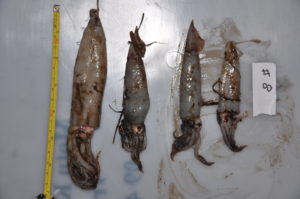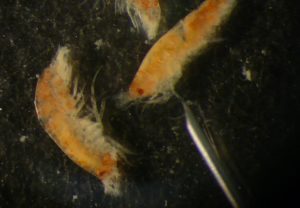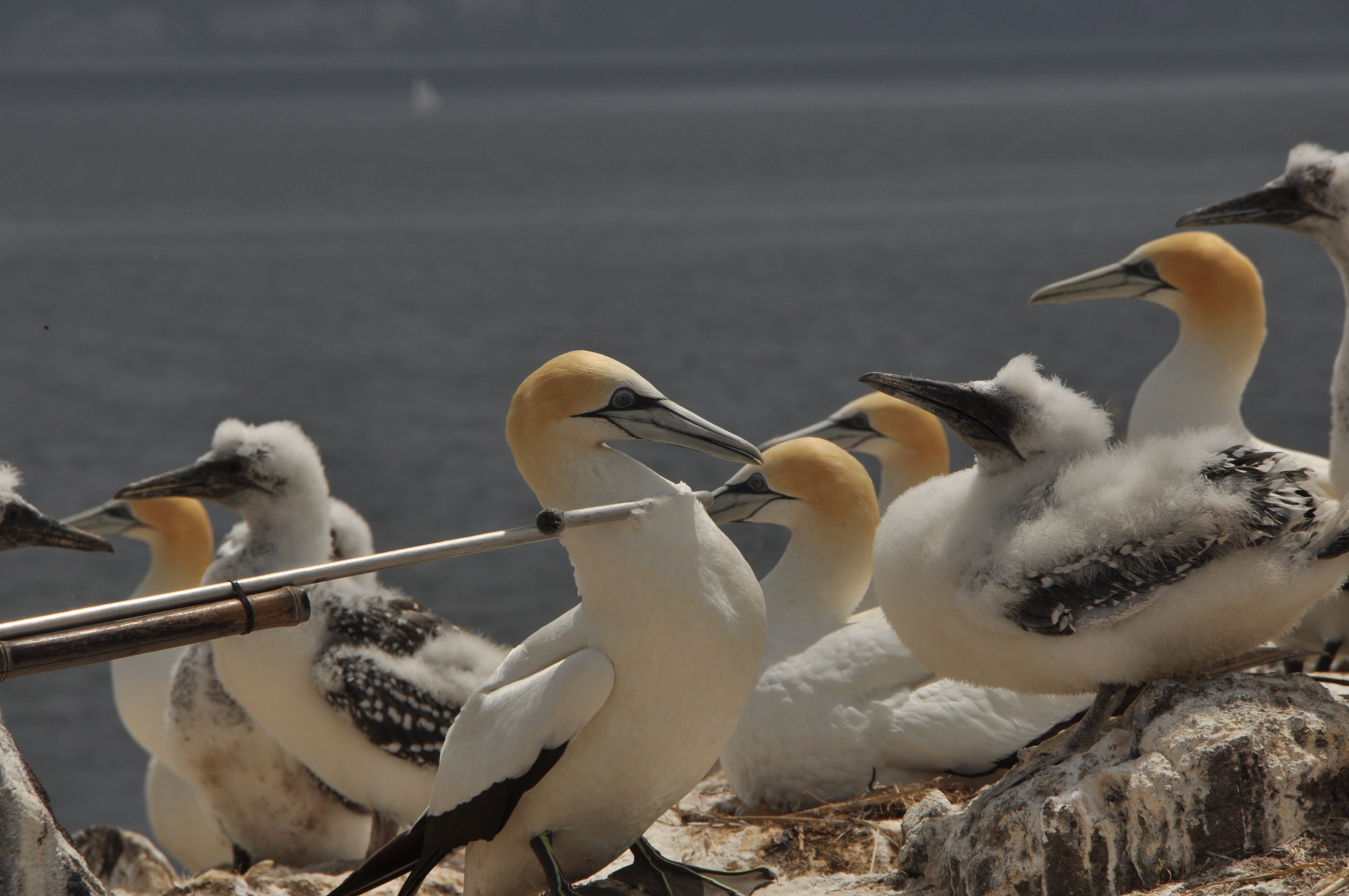[custom_headline type=”left” style=”margin-top: 45px;” level=”h2″ looks_like=”h5″ accent=”true”]Using seabirds to sample marine ecosystems: Australasian gannets in the Hauraki Gulf[/custom_headline]
Every MID summer’s day a spectacular, natural phenomenon occurs in the wider Hauraki Gulf namely the departure and return of hundreds of thousands seabirds leaving and then returning to their island breeding colonies to feed their growing chicks. Included in this daily commute is a substantial population of Australian Gannets (tākapu), who spread out across the gulf and then periodically plunge dive on shoaling fish and squid. These fish and squid have often been herded close to the surface by a range of other submerged predatory fish and marine mammals.
This phenomenon and the value of the Gulf for a range of recreational and commercial activities is dependent on the resilience of this coastal ecosystem. All ecosystems are characterised by a complex range of predator-prey interactions represented by food webs. Over time changes in the importance of particular interactions within such webs are likely to reflect the impact of both natural and human related impacts on components parts of these food webs. Analysing the diet of a range of top predators including seabirds is clearly one approach to providing some indication of the state and health of this coastal ecosystem.
Based on analysis of regurgitate prey from the crop of adult gannets and the stomach contents of squid and fish eaten by gannets, we have made substantial progress towards characterising the range of species that form part of the food web upon which gannets and some other seabirds depend. Identification of primary and secondary prey of gannets has used traditional approaches using visible characteristics of ingested prey and molecular approaches based on the sequencing of the DNA of prey recovered from more digested and excreted food remains. Our results to date have confirmed the general importance of surface shoaling fish, such as jack mackerel and anchovy in gannet diet but also highlighted somewhat unexpectedly for 2017, at least, the northern arrow squid Nototodarus gouldi was an important part of the diet. Analysis of squid and fish stomachs has suggested a central role of a local krill species Nyctiphanes australis in the food web at lower trophic levels. The diets of the fish preyed on by gannets are more diverse and generally more digested than that of squid. Stomachs have contained, other fish, amphipods, ostracods, decapod and barnacle larvae as well as krill. A more detailed picture of the food web is awaiting completion of further molecular analyses. We intend to repeat aspects of the study in subsequent years to provide some indication of changes in the importance of particular predator prey interactions among years. Both squid and krill are short lived animals with population size being linked closely to suitable environmental conditions in a given year. Accordingly, population sizes of these species may be subject to large fluctuations between years with implications for gannet diet and foraging behaviour.


Collection of fresh stomach samples from seabirds is a time consuming and labour intensive activity. The demonstration that we could also use molecular analysis of prey DNA on more easily collected faecal samples would suggest a powerful more sustainable approach for longer term studies on gannets and other seabirds. Such longer term studies are important if we are to use this approach to monitor aspects of the health of the ecosystem.
We gratefully acknowledge the support of BirdsNZ in partly funding this research.
The project is a collaboration between: Nigel Adams, Stephane Boyer, Marie-Caroline Lefort, Erin Boyle, Monqiue Wilson, Chloe O’Rouke, Seluvaia Lameko (Unitec) Todd Landers (Auckland Council) and Steffi Ismar (Helmholtz Centre for Ocean Research, Kiel).
Contact
Dr Nigel Adams
nadams@unitec.ac.nz

Leave a Reply